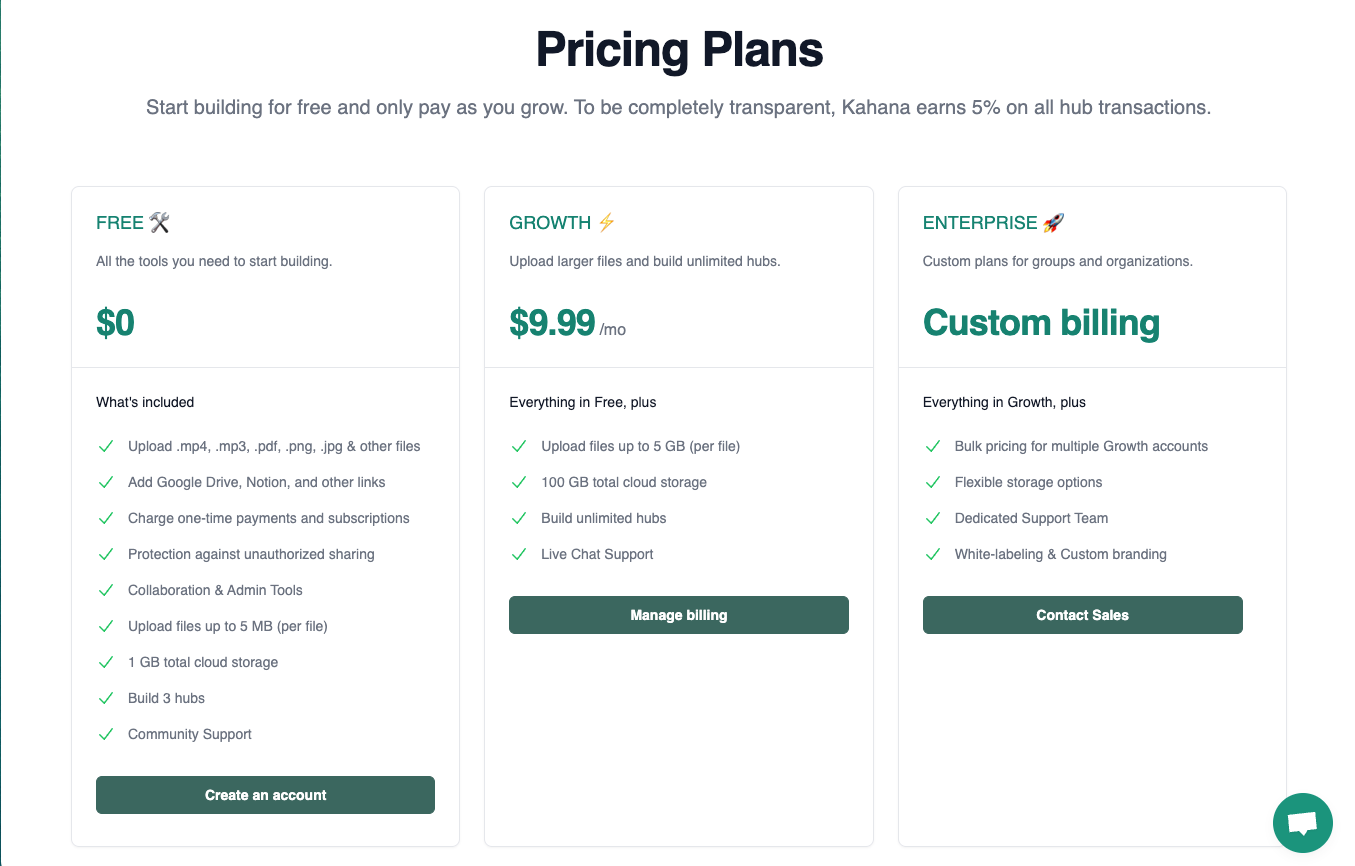Kahana vs. Udemy: What are the Differences?

Are you looking for a platform to create and sell your online courses or digital products? With so many options out there, it can be overwhelming to choose the right one. Two popular choices are Kahana and Udemy.
While they may seem similar at first glance, there are some key differences between the two that could impact your decision about what to use. In this blog, we'll compare Kahana and Udemy and explain how they work, what the differences are, and pricing.
How does Udemy work?
Udemy is an online learning platform that allows anyone to create and sell courses on a wide range of topics.
Udemy for Learners
Here's how Udemy works for learners:
- Course Selection: As a learner, you can browse through thousands of courses on Udemy and select the one that interests you the most. Udemy offers courses on various topics, including programming, marketing, photography, music, and many more.
- Course Enrollment: Once you find a course you're interested in, you can enroll in it by paying the course fee. Udemy often offers discounts and promotions to its learners, so keep an eye out for those.
- Course Content: Once you enroll in a course, you'll gain access to all the course content, including video lectures, quizzes, assignments, and any other learning materials the instructor has provided.
- Learning Experience: Udemy's courses are designed to be self-paced, so you can learn at your own pace and on your own schedule. You can also communicate with the instructor and other students through Udemy's messaging system, which allows you to ask questions, share ideas, and get feedback.
- Course Completion: After completing a course, you'll receive a certificate of completion, which you can use to showcase your skills and knowledge to potential employers or clients.
Udemy for Creators
Here's how Udemy works for creators:
- Course Creation: As a creator, you can create a course on any topic that you have expertise in. You can use Udemy's course creation tools, including video lectures, quizzes, assignments, and other learning materials to create your course.
- Course Publishing: Once you've created your course, you can publish it on Udemy's platform. Udemy will review your course to ensure that it meets its quality standards before making it available to learners.
- Course Promotion: Udemy provides creators with tools to promote their courses, including promotional emails, social media marketing, and paid advertising. You can also use your own marketing channels to promote your course and drive traffic to your course page.
- Revenue Sharing: Udemy offers a revenue-sharing model, which means that creators can earn money from their courses based on how many learners enroll in their courses. Udemy takes a percentage of the revenue generated by course sales, and creators receive the rest.
- Course Maintenance: As a creator, you may have to update and maintain your course over time, keeping the content up-to-date and relevant to learners. You can also interact with your students, answer their questions, and provide feedback to help them succeed in their learning journey.
How does Kahana work?
Kahana is an online learning and content platform that allows creators to share their knowledge and monetize their expertise by creating and charging access to collections of content and knowledge called "hubs".
It is also a collaborative platform that enables creators to co-create and sell hubs with others dynamically. Learners can access the content within the hubs by subscribing to them and paying a fee, and they can interact with the creators through comments, feedback, and questions.
Kahana also provides tools to help creators promote their hubs and grow their audience, and it takes a 5% cut of the revenue generated by the hub (not including Stripe fees).
Kahana for learners
Kahana works for learners in the following way:
- Discovering Content: On Kahana's Explore Page, learners can explore and discover content. The content is sorted into "hubs," which are collections of content centered around a particular topic.
- Subscribing to Hubs: To gain access to the content within a hub, learners can subscribe by making a payment through Kahana's integrated payment processing system (powered by Stripe).
- Accessing Content: Once subscribed, learners can access the hub's content, which can include text-based articles, PDF guides, YouTube videos, and other media types.
- Engaging with Creators: Learners can provide feedback, ask questions, and interact with the hub's creators through comments. Additionally, creators can offer further resources and support through the hub.
- Earning Accolades: Certain creators may award accolades to learners who complete specific milestones within the hub. These rewards may include certificates, badges, or other types of recognition.
Kahana for Creators
Kahana for Creators If you're a creator, here's how Kahana works for you:
- Create a Hub: You can create a hub on Kahana to share your content with learners. A hub is a collection of content on a specific topic, like a course, blog, or resource library. With Kahana's easy-to-use drag-and-drop interface, you can create your hub and add content to it.
- Set Up Monetization: You can monetize your hub by setting a price for learners to access the content. Kahana's integrated payment processing system handles all payment transactions securely, so you don't have to worry about managing payments yourself.
- Interact with Learners: You can interact with learners who subscribe to your hub through comments, feedback, and questions. You can also offer additional resources and support to learners through your hub.
- Grow Your Audience: Kahana provides tools to help you promote your hub and grow your audience. You can share your hub on social media, email, and other channels to attract new learners.
- Earn Revenue: You can earn revenue through your hub by collecting subscription fees from learners. Kahana takes a 5% cut of the revenue generated by the hub (not including Stripe fees).
Kahana also offers a Creators 'n Experts Community, which provides creators with access to additional resources and events, such as live webinars, open office hours, and networking opportunities to build their hubs.
What are the differences between Udemy and Kahana?
There are a few key differences between Udemy and Kahana.
Collaboration
The first major difference is collaboration. Kahana is a collaborative platform that allows you to create courses, digital products, and collections of knowledge that you can sell and co-create with others dynamically.
On the other hand, while Udemy technically allows you to create courses with other people, the platform itself is not designed to help you collaborate. You have to manage the collaboration process on your own. Kahana, however, is designed to be collaborative and you can invite people to co-create and build the actual product within Kahana together.
Flexibility
Another important difference between the two platforms is that Kahana is focused on dynamic collections of knowledge that you can easily update as things change and as you learn more information to update people who are subscribing or paying for access to your hub. In contrast, Udemy is much more static, where you create a static course that may become obsolete if things change, requiring you to make major updates that will take a lot of time before reselling it.
Kahana allows you to easily make updates on the fly, making it easy to maintain the hub that you're creating for the course. The digital product you're creating is inherently something that is going to change over time, and it's designed to allow you to make updates efficiently.
Recurring subscription revenue
Lastly, Kahana provides more potential to generate recurring subscription revenue, whereas Udemy is more geared toward one-time payments as you sell courses rather than a dynamically changing repository of knowledge - a "playlist behind a paywall."
Kahana vs. Udemy pricing plans
Last but not least, let’s talk numbers. Both Kahana and Udemy are useful platforms, but Kahana has a significantly less expensive price tag.
Kahana Pricing
Registration for Kahana provides free access to the platform without any initial costs, even for the free plan. No payment information or credit card details are required, although it's important to note that a 5% fee will be deducted from your earnings, exclusive of Stripe fees, when monetizing hubs on Kahana.
The free tier enables users to create up to two hubs with an unlimited number of collaborators and set up payment processing to monetize their content. However, the free tier has some limitations, such as restricted storage. If you need more than two hubs, advanced features, or higher limits, you have the option to upgrade to one of Kahana's paid plans.
For more information, please check out Kahana pricing or contact a representative.

Udemy Pricing
According to Udemy's pricing page, when a student purchases a course using an instructor's coupon or referral link, the instructor receives 97% of the revenue. In cases where a sale does not result from an instructor promotion, such as when a user clicks on a Udemy advertisement or browses the Udemy marketplace for courses, instructors receive 37% of the revenue.
Sign up for free
You can sign up and use Kahana for free forever, without incurring any charges, even if you decide to remain on the free plan and do not acquire any subscribers for your hub.
Quick answers
If you cannot find the answer you're looking for or if the information appears to be outdated, please inform us so we can assist you better.
- 🐦 Tweet us directly @KahanaHQ (fastest!)
- 💬 Leave a comment below
- 🗣️ Visit our Help Center

Talk with a Kahana representative
Fill out your information and a Kahana team representative will reach out to you. Have a simple question? Search our library of articles


